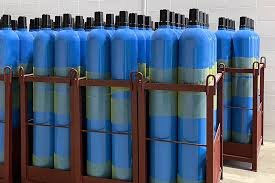Good Manufacturing Practices (GMP) for Medical Gases

1. Premises and Equipment
-
Use dedicated and clean facilities for production, storage, and filling of gases.
-
Ensure gas cylinders, pipelines, valves, regulators, and manifolds are properly maintained and validated.
-
Prevent cross-contamination between medical and industrial gases.
2. Raw Material Control
-
Source gases from qualified and approved suppliers.
-
Perform identity and purity testing for all incoming bulk gases.
-
Maintain certificates of analysis (CoA) for raw gases.
3. Production and Filling
-
Use validated processes for gas compression, purification, mixing, and liquefaction.
-
Ensure cylinders are visually inspected, hydro-tested, and cleaned before filling.
-
Apply correct labeling during and after filling operations.
4. Quality Assurance and Control
-
Test gases for identity, purity, moisture, hydrocarbons, carbon monoxide, and microbial contamination (where applicable).
-
Monitor pressure, volume, and correct labeling to ensure compliance.
-
Maintain batch manufacturing records with traceability.
5. Cylinder Management
-
Separate empty, full, and quarantined cylinders.
-
Use color coding and proper labeling as per pharmacopeial and regulatory guidelines.
-
Implement a recall system for defective cylinders.
6. Documentation
-
Maintain SOPs for production, filling, cleaning, testing, labeling, and distribution.
-
Record all activities (batch records, test reports, cleaning logs).
-
Ensure data integrity and audit trails.
7. Personnel and Training
-
Train staff in GMP, gas handling, and safety procedures.
-
Use protective equipment while handling gases under pressure.
-
Restrict unauthorized access to production and filling areas.
8. Distribution and Storage
-
Store medical gases in controlled, ventilated areas.
-
Maintain records of distribution for traceability.
-
Ensure transport in dedicated, safe, and compliant vehicles.
9. Regulatory Compliance
-
Follow pharmacopeial standards (IP, BP, USP, EP).
-
Comply with ISO standards for medical gases and cylinders.
-
Implement pharmacovigilance for reporting adverse events related to medical gases.

